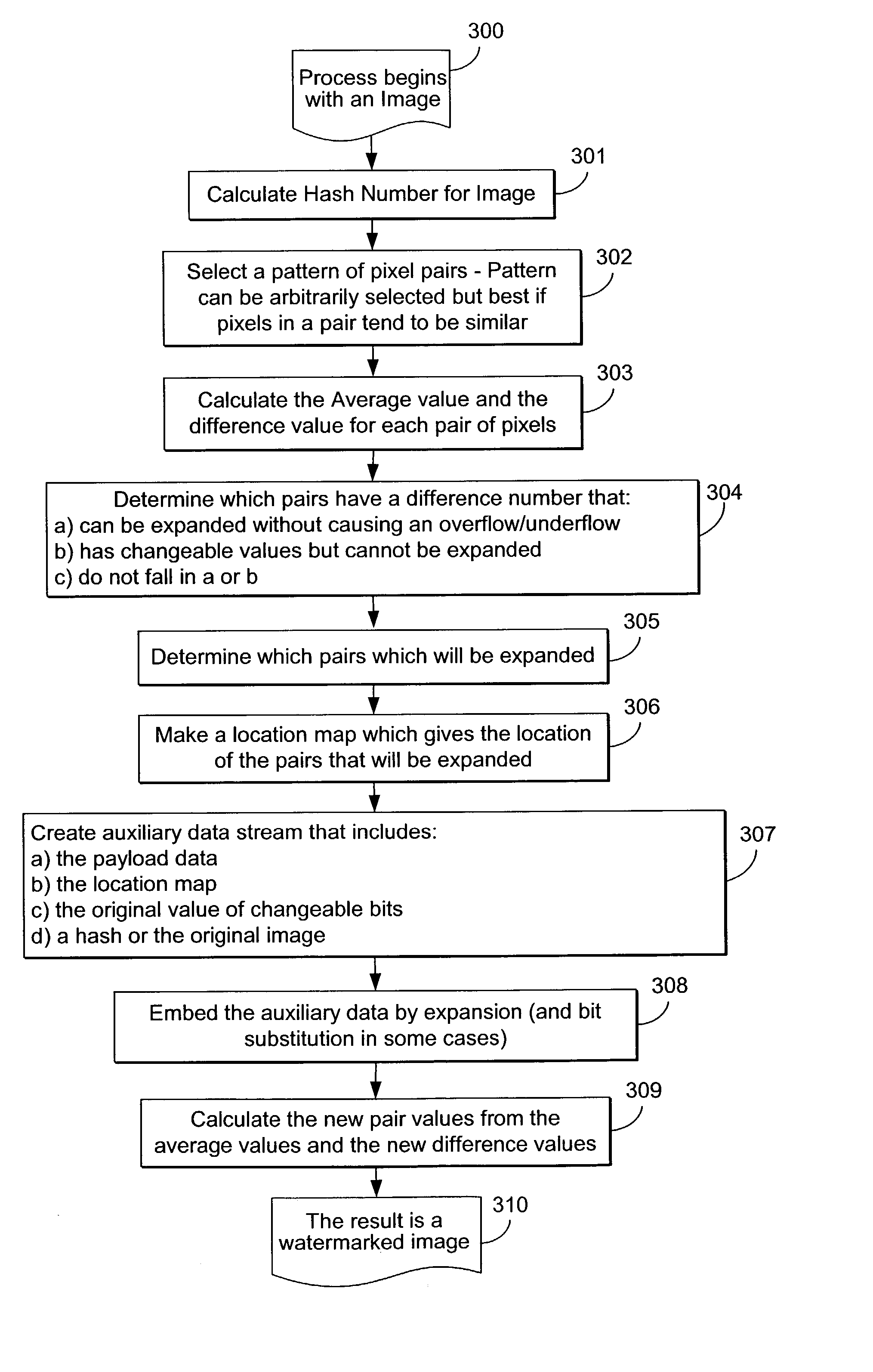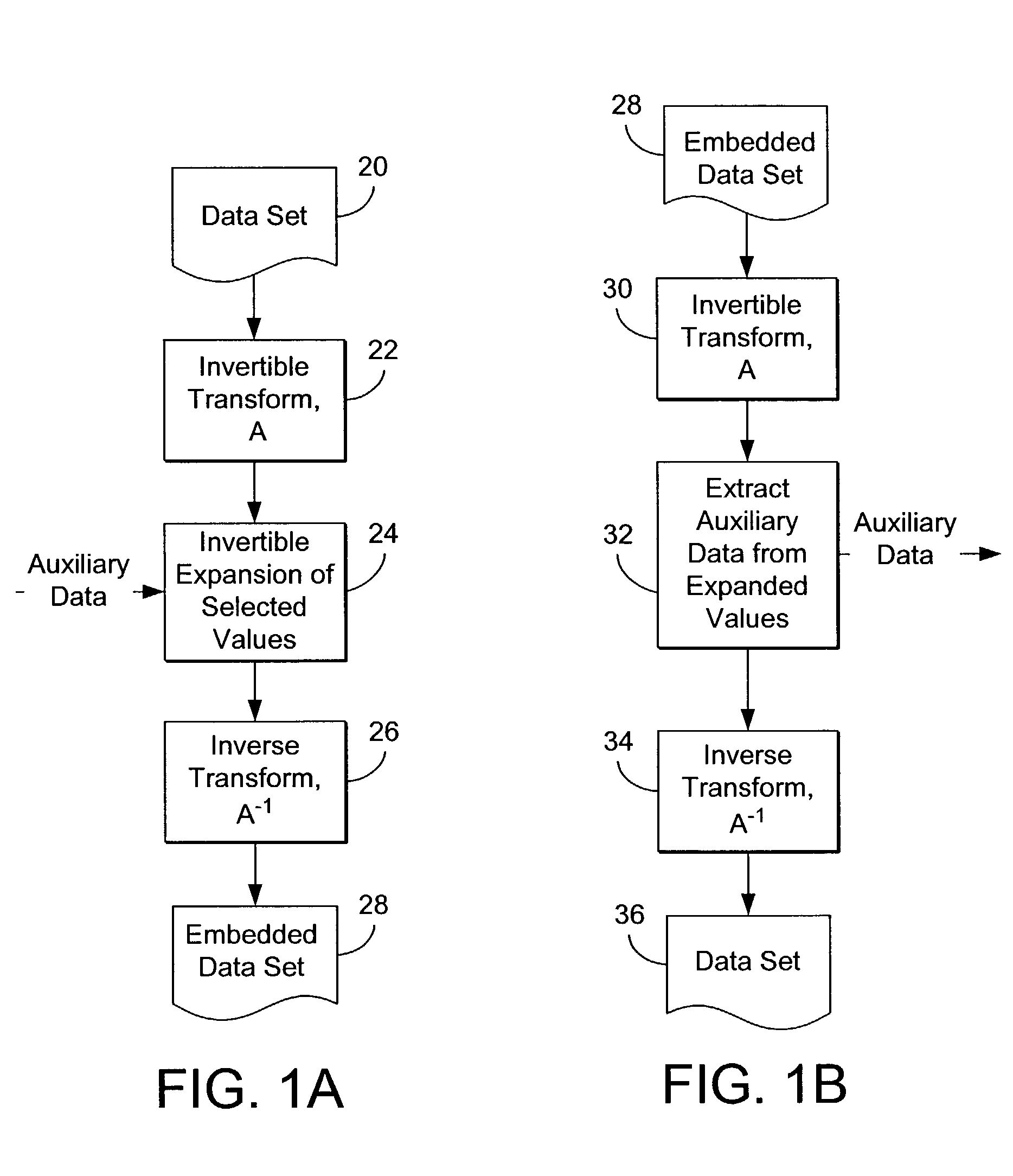Reversible watermarking
a watermarking and reverse technology, applied in the field of reverse watermarking, can solve the problems of overflow or underflow conditions, watermark degraded or rendered unreadable, etc., to improve the performance of data embedding, optimize capacity, and improve the effect of data embedding performan
- Summary
- Abstract
- Description
- Claims
- Application Information
AI Technical Summary
Benefits of technology
Problems solved by technology
Method used
Image
Examples
fourth embodiment
[0168] With this embodiment, more difference numbers will be changeable and / or expandable than in the Also note that if h=0 or -1, the conditions on changeable and expandable are exactly the same.
[0169] When this embodiment is applied to a digital image, the image is partitioned into pairs of pixel values. A pair comprises two pixel values or two pixels with a relatively small difference number. The pairing can be done horizontally, vertically, or by a key-based specific pattern. The pairing can be through all pixels of the image or just a portion of it. The integer transform (1) is applied to each pair. (it is noted that one can embed a payload with one pairing, then on the embedded image, we can embed another payload with another pairing, and so on.)
[0170] After applying transform 1, five disjoint sets of difference numbers, EZ, NZ, EN, CNE, and NC are created:
[0171] 1. EZ: expandable zeros. For all expandable h.epsilon.{0,-1}
[0172] 2. NZ: not expandable zeros. For all not expand...
first embodiment
[0208] In this embodiment, as in the first embodiment, the differences of neighboring pixel values are calculated, and some difference numbers are selected for difference expansion. The original G-LSBs values of the difference numbers, the location of expanded difference numbers, and a payload (which includes an authentication hash of the original image) may all be embedded into the difference numbers as indicated by bloc 308 in FIG. 3. The needed extra storage space is obtained by difference expansion. With this embodiment, no compression is used.
[0209] This embodiment relates to watermarking a grayscale image. For color images, one can embed the data into each color component individually. Alternatively one can de-correlate the dependence among different color components, and then embed the data into the de-correlated components.
[0210] The overall operation is as follows: a payload is embedded in a digital image I, to create an embedded image I'. An image I" is retrieved from the ...
PUM
 Login to View More
Login to View More Abstract
Description
Claims
Application Information
 Login to View More
Login to View More - R&D
- Intellectual Property
- Life Sciences
- Materials
- Tech Scout
- Unparalleled Data Quality
- Higher Quality Content
- 60% Fewer Hallucinations
Browse by: Latest US Patents, China's latest patents, Technical Efficacy Thesaurus, Application Domain, Technology Topic, Popular Technical Reports.
© 2025 PatSnap. All rights reserved.Legal|Privacy policy|Modern Slavery Act Transparency Statement|Sitemap|About US| Contact US: help@patsnap.com



